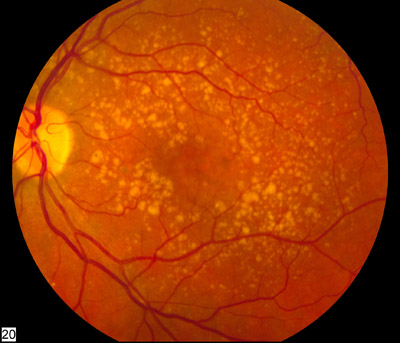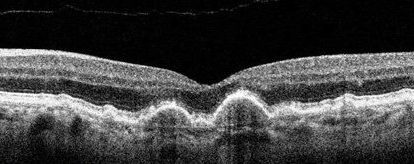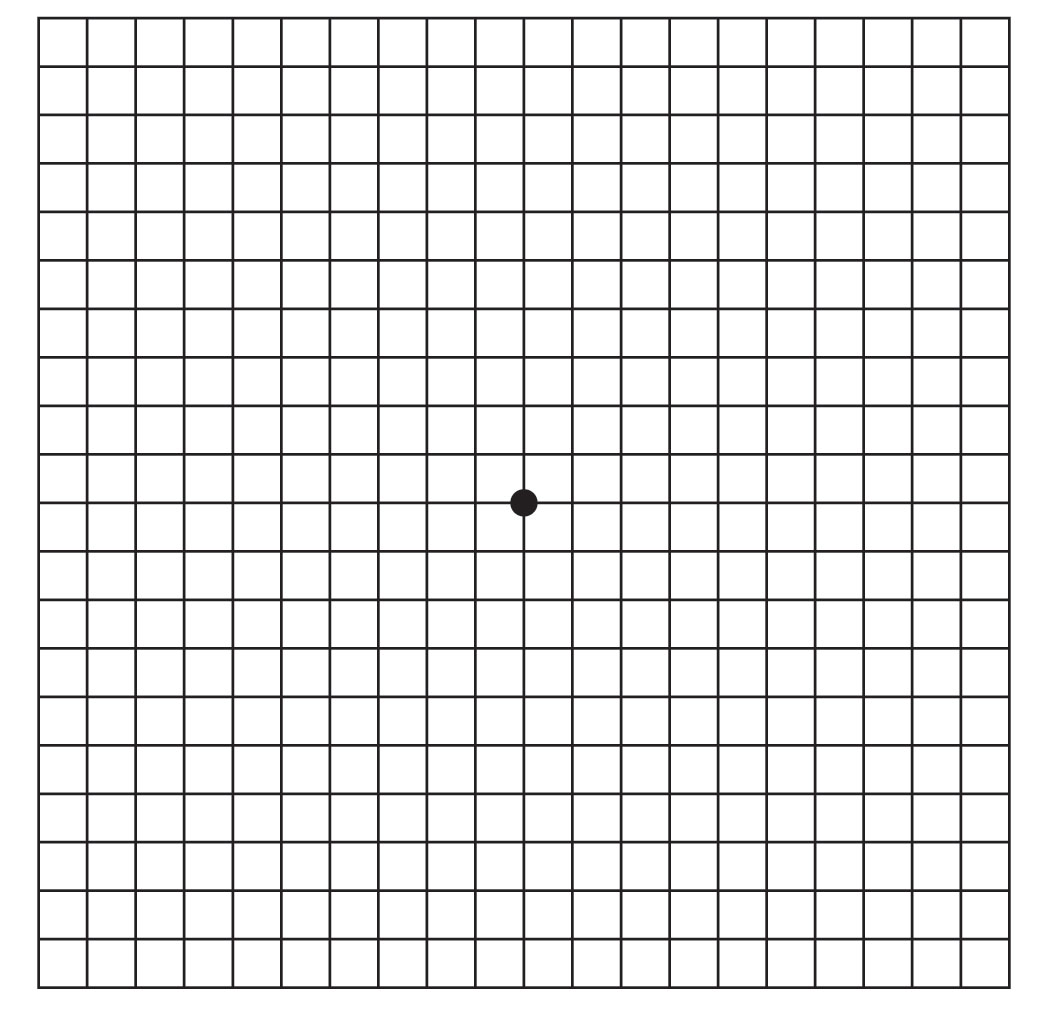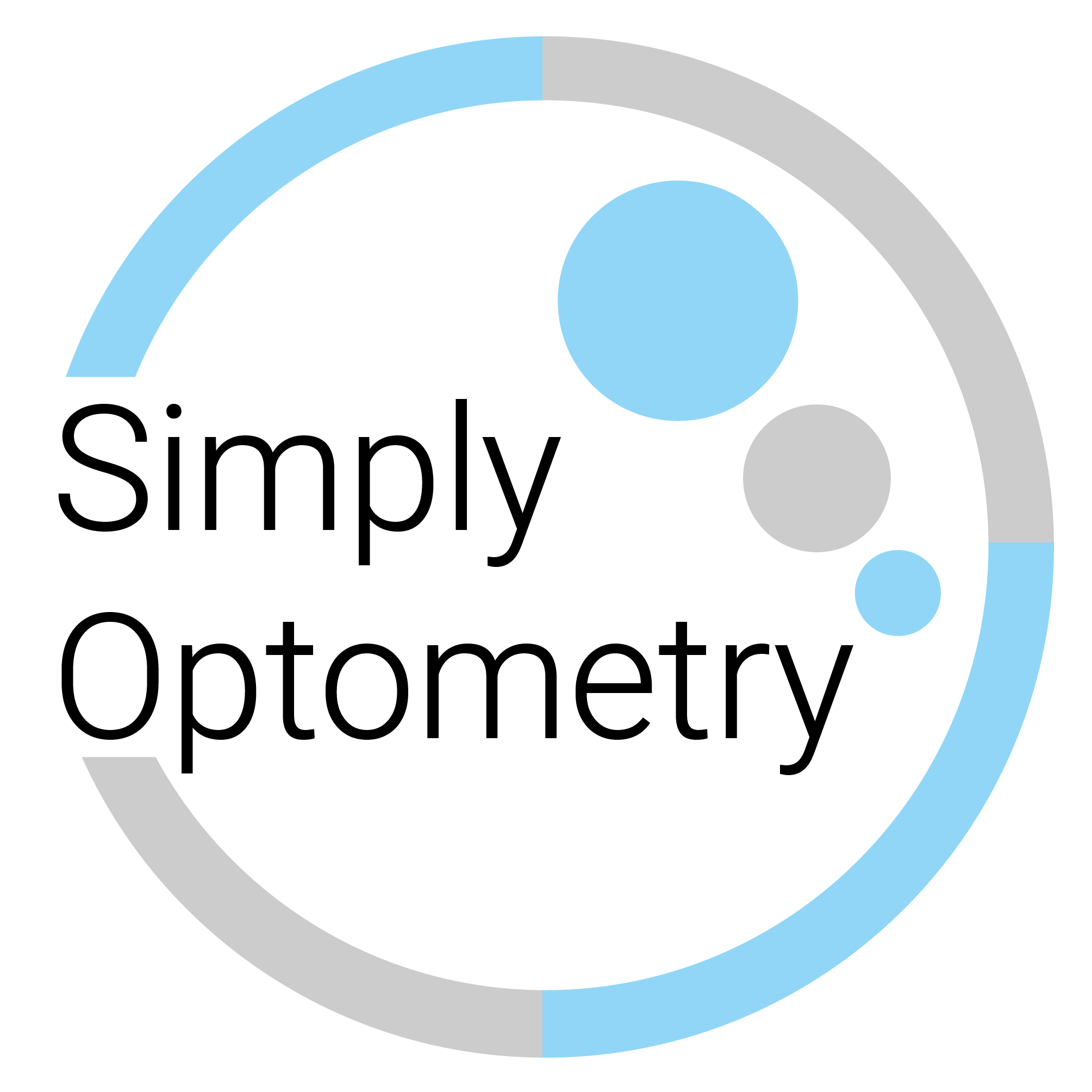WHAT IS AGE-RELATED MACULAR DEGENERATION?
Age-related Macular Degeneration, or ARMD, is a condition that deteriorates the central part of your vision and could eventually lead to blindness if left untreated. It is the most common cause of blindness in Americans 65 and older. Without a dilated eye exam by a trained professional, it may be impossible to know if you are developing macular degeneration.
Though there is currently no cure for macular degeneration, early detection is important in the management of the disease and slowing the deterioration of vision. The most important way to prevent and manage ARMD is to have annual eye exams with dilation so that the doctor can assess your risk and best approach to treating the condition based on your own history and situation.

DETECTION OF MACULAR DEGNERATION
The most important way to detect macular degeneration is with an annual dilated eye exam and optical coherence tomography (OCT). As the full name implies, the condition is most often age-related. ARMD most commonly occurs in people age 65 or older, but can be found earlier as well. Genetics are also an important risk factor. Generally speaking, ARMD tends to be inherited along the maternal bloodline.
Some other important risk factors include:
- Smoking (approximately doubles the risk of ARMD)
- Female gender
- Caucasian race
- Obsesity
- Blue light and UV exposure
DRY VS WET MACULAR DEGENERATION
There are two forms of macular degeneration, known as the "dry" and "wet" forms. They are named as such because the wet form involves fluid leaking from vessels under the retina whereas the dry form does not involve any leaky vessels.
Of the two forms, dry macular degeneration is the more common one. In this stage, the retinal cells are starting to break down, which causes deposits to accumulate underneath the retina. This can cause decreased vision and distortions in vision.
The wet form is the more advanced form that happens when the dry form progresses into a more severe state. As the retina breaks down, it may stimulate the formation of new blood vessels underneath the retina in order to supply the retina with more oxygen and nutrients. This is dangerous because these new blood vessels are generally very leaky and grow through the retina from underneath, causing significant damage and vision loss.


MANAGEMENT OF MACULAR DEGENERATION
Most treatment for macular degeneration centers around a combination of essential vitamins and nutrients vital to the health of the central retina. Based on current research, the most vital nutrients are vitamins A, C, and E, zinc, lutein, and zeaxanthin, and most eye-related vitamins contain a formula of these essential nutrients as suggested in the Age-Related Eye Disease Study (AREDS) of 2001. These eye-related vitamins are especially important for patients in which there is concern of the progression of the disease from the "dry" form to the more dangerous "wet" form.
For patients already diagnosed with macular degeneration, it may be important to involve a retinal specialist for further treatment. An effective treatment currently used to help control wet ARMD is anti-VEG-F therapy, which involves injecting medications into the eye which help to prevent further progression of the wet disease.
Lifestyle changes are essential for the management of macular degeneration. Increased consumption of green leafy vegetables, dark colored fruits high in antioxidants, and omega-3 fatty acids has been shown to be helpful. Losing weight, quitting smoking, and decreasing exposure to blue light and UV have all been shown to be important as well.
Though there is currently no cure for macular degeneration, we are constantly improving our ability to recognize the condition early to slow down its progression. As our life spans are increasing, this age-related condition is becoming increasingly prevalent. It will be a major area of research and concern going forward, so we hope that there may be new treatments and a cure on the horizon.


